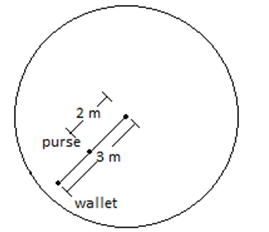9th Grade > Mathematics
QUADRILATERALS MCQs
Total Questions : 57
| Page 1 of 6 pages
Answer: Option A. -> kite
:
A
Here, the ratio is given to be a:b:b:a.
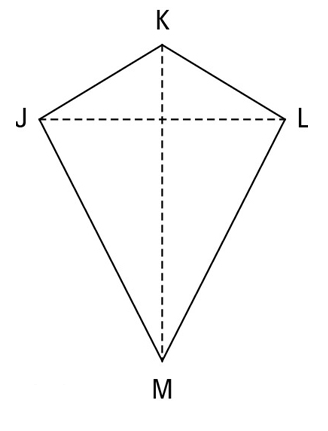 If KLMJis a quadrilateral, the sides are in the ratio a:b:b:a.
If KLMJis a quadrilateral, the sides are in the ratio a:b:b:a.
Let KL= a, LM= b, MJ= b and JK= a.
Here, JK and LM are equal and LM and MJ are equal.
We know that,kite is a quadrilateral with two pairs of adjacent sides equal in length.
The data given implies that we have two disjoint pairs of adjacent sides which are equal i.e. there are two pairs of adjacent sides which are equal and the opposite sides are not equal.
This is the very definition of a kite.
:
A
Here, the ratio is given to be a:b:b:a.
Let KL= a, LM= b, MJ= b and JK= a.
Here, JK and LM are equal and LM and MJ are equal.
We know that,kite is a quadrilateral with two pairs of adjacent sides equal in length.
The data given implies that we have two disjoint pairs of adjacent sides which are equal i.e. there are two pairs of adjacent sides which are equal and the opposite sides are not equal.
This is the very definition of a kite.
Answer: Option C. -> ∠A=130∘,∠C=130∘,∠B=50∘
:
C
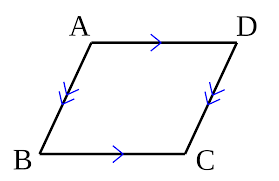
In a parallelogram, the adjacent sides and anglesare not equal and no sides are perpendicular to other.
∠A+∠B=130∘+50∘=180∘
Here, ∠A and ∠B are co-interior angles and their sum is 180∘.
By the converse of co-interior angles theorem, AD || BC and AB is the transversal.
∠D+∠A=50∘+130∘=180∘
Here, ∠D and ∠A are co-interior angles and their sum is 180∘.
By the converse of co-interior angles theorem, AB ||DC and AD is the transversal.
:
C

In a parallelogram, the adjacent sides and anglesare not equal and no sides are perpendicular to other.
∠A+∠B=130∘+50∘=180∘
Here, ∠A and ∠B are co-interior angles and their sum is 180∘.
By the converse of co-interior angles theorem, AD || BC and AB is the transversal.
∠D+∠A=50∘+130∘=180∘
Here, ∠D and ∠A are co-interior angles and their sum is 180∘.
By the converse of co-interior angles theorem, AB ||DC and AD is the transversal.
Answer: Option A. -> True
:
A
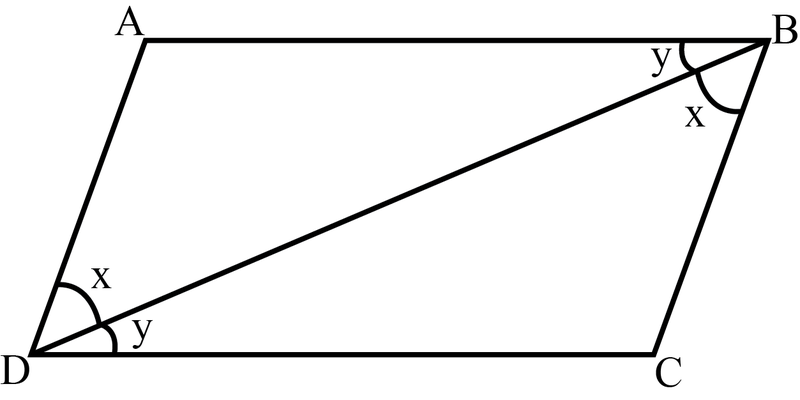
In the given parallelogram, AD || BC and AB || DC
Consider the diagonal BD which acts as a transversal for BC and AD.
∠ADB=∠DBC=x∘ ( alternate angles)
Consider the diagonal BD which acts as a transversal for ABand BC.
∠ABD=∠BDC=y∘ ( alternate angles)
We can see that
∠B=∠ABD+∠DBC=x∘+y∘
Also,∠D=∠ADB+∠BDC=x∘+y∘
Thus, ∠B=∠D.
Hence, opposite angles of a parallelogram are equal.
:
A

In the given parallelogram, AD || BC and AB || DC
Consider the diagonal BD which acts as a transversal for BC and AD.
∠ADB=∠DBC=x∘ ( alternate angles)
Consider the diagonal BD which acts as a transversal for ABand BC.
∠ABD=∠BDC=y∘ ( alternate angles)
We can see that
∠B=∠ABD+∠DBC=x∘+y∘
Also,∠D=∠ADB+∠BDC=x∘+y∘
Thus, ∠B=∠D.
Hence, opposite angles of a parallelogram are equal.
:
In a parallelogram, the opposite angles are equal.Hence, the non-adjacent angle is 80∘.
Answer: Option A. -> Only one angle is known.
:
A
If one angle of a parallelogram is known, the other angles can be found out by applying the following two properties:
1. The adjacent angles are supplementary.
2. The opposite angles are equal.
:
A
If one angle of a parallelogram is known, the other angles can be found out by applying the following two properties:
1. The adjacent angles are supplementary.
2. The opposite angles are equal.
Answer: Option A. -> 150∘
:
A
According to the angle sum property of a quadrilateral, the sum of all the angles of a quadrilateral is =360∘
∴The fourth angle
=360∘-(40∘+80∘+90∘)
=360∘−210∘
=150∘
:
A
According to the angle sum property of a quadrilateral, the sum of all the angles of a quadrilateral is =360∘
∴The fourth angle
=360∘-(40∘+80∘+90∘)
=360∘−210∘
=150∘
Answer: Option B. -> Rectangle
:
B
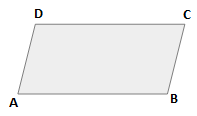 We know that,
We know that,
the opposite angles of a parallelogram areequal.
ie. ∠A=∠Cand∠B=∠D...(i)
If they are supplementary as well, then
∠A+∠C=180∘
from (i),
∠A+∠A=180∘
2∠A=180∘
∠A=90∘
Similarly,
∠C=90∘
Itmeans that each angle will be equal to 90∘.
A parallelogram whose internal angles are all 90∘ is a rectangle.Thus, the figure will be a rectangle.
:
B
the opposite angles of a parallelogram areequal.
ie. ∠A=∠Cand∠B=∠D...(i)
If they are supplementary as well, then
∠A+∠C=180∘
from (i),
∠A+∠A=180∘
2∠A=180∘
∠A=90∘
Similarly,
∠C=90∘
Itmeans that each angle will be equal to 90∘.
A parallelogram whose internal angles are all 90∘ is a rectangle.Thus, the figure will be a rectangle.
Answer: Option D. -> 140∘
:
D
Let the fourthangle be x∘.
By angle sum property, we know that sum of interior angles of a quadrilateral is 360∘.
⇒37∘+130∘+53∘+x=360∘
⇒x=360∘−(37∘+130∘+53∘)=360∘−220∘=140∘
:
D
Let the fourthangle be x∘.
By angle sum property, we know that sum of interior angles of a quadrilateral is 360∘.
⇒37∘+130∘+53∘+x=360∘
⇒x=360∘−(37∘+130∘+53∘)=360∘−220∘=140∘
Answer: Option A. -> True
:
A
The sum of internal angles of a quadrilateral is 360∘. The sum of external angles of any polygon, irrespective of the number of sides is360∘. Hence, the given statement is true.
:
A
The sum of internal angles of a quadrilateral is 360∘. The sum of external angles of any polygon, irrespective of the number of sides is360∘. Hence, the given statement is true.

